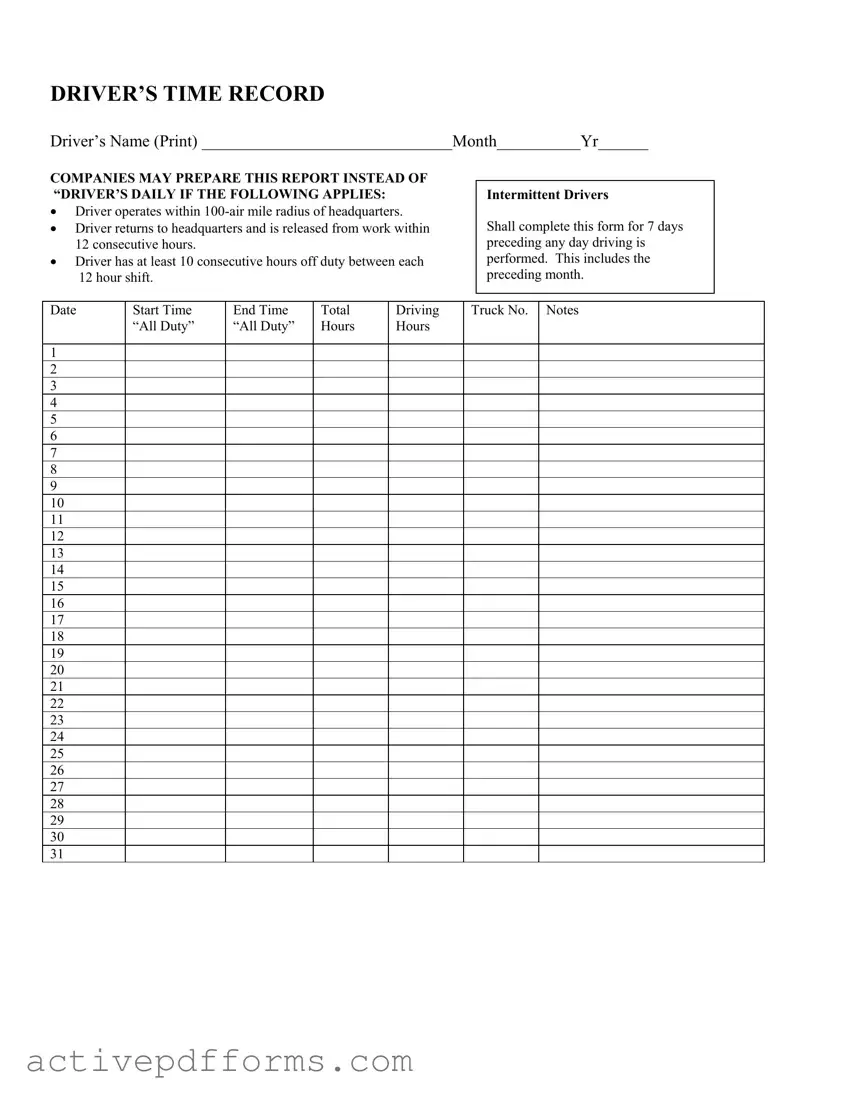The essence of ensuring safety and compliance within the trucking industry often revolves around thorough documentation and adherence to regulations, prominently highlighted by the use of the Driver Time Record form. This document serves as a crucial tool for monitoring and recording the hours a driver spends on the road, clearly structured to capture essential information including the driver’s name, the month and year, alongside detailed daily logs of driving activities. Specifically tailored to meet regulatory requirements, this form finds its unique significance for drivers operating within a 100-air mile radius of their headquarters, mandating its completion under specific conditions such as returning to headquarters within 12 consecutive hours and having at least 10 consecutive hours of off-duty time between shifts. Furthermore, it addresses the needs of intermittent drivers by requiring the form to be filled out for the 7 days preceding any day driving is performed, ensuring that all necessary driving activities and hours are meticulously tracked. By maintaining a comprehensive record of start times, end times, total driving hours, and any notable observations, the Driver Time Record form not only facilitates regulatory compliance but also plays a pivotal role in maintaining road safety and operational efficiency within the transportation sector.


